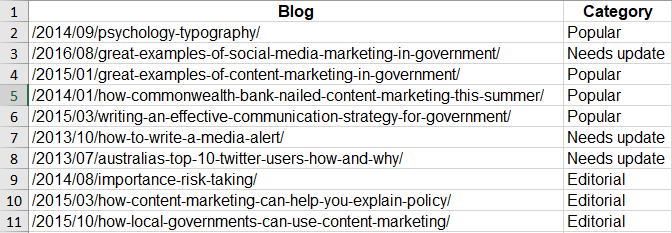Recycle, Re-purpose and Refresh
The internet is an insatiable beast; and trying to continually feed it fresh content is an exhausting challenge. The smart content marketer knows just how crucial it is to get the most out of every piece of original work. Recorded a podcast? Great, write an article quoting the talent and add value to the piece. Got a great photo of yourself at a networking event? Tops, write a review of the event. And don’t forget to then push all of this content across every social media channel as much as possible.
But this is where many people let the trail go cold, and the clever content creator comes to the fore. Weeks, months, even years later that now dusty article, video, podcast, how-to, case study or Q&A can be revived – redistributed – refreshed and draw people in all over again.
Let us show you how.
There are four basic steps to recycling content: Identify, update, publish and promote and evaluate.
1. Identify
The first step is to identify the content (blogs, infographics etc.) you wish to give new life to.
The best way to start is to go through your content and categorise it into following types:
- Popular content – find the best performing blogs on your website using Google Analytics or something similar.
- Editorial pieces – Identify blogs or case studies that you think have great content but did not gain adequate popularity.
- Old content – Content that was created some time ago that needs to be updated to make it relevant.
Example:
This is just a suggestion, and you can use whatever categories you find the most useful to your content type.
It is important to always keep your audience in mind, what are they interested in now, how can you modernise a piece from 2012, what value does it give them? Republishing the same old content just to fill a gap in the calendar is lazy, and your audience won’t appreciate it.
2. Update
While updating content, consider the below to improve it:
- Make sure it has a current spin to it – Edit to make it relevant to today’s trends, developments and society. Check pre-existing links to external websites and any internal links to more of your own content and add newer ones if possible.
- Make sure it is visually pleasing – Include eye-catching infographics or video that adds value to the existing content. This may be something you missed the first time but can have a big impact now.
- Update keywords and SEO – Using tools like Yoast SEO, update the keywords and SEO for your content to make it easier to find on search engines. Other fields that can be updated are meta description, heading, sub-heading and ease of readability, all of these will improve your pieces’ chances of being found when searched for, and in turn grow your audience. If you need a refresh on SEO and how to make it work for you, check out our earlier blog here.
3. Publish & promote
Once the content is updated, make sure it’s published and promoted wherever possible – we want to make the most of this again.
Publish:
- When it comes to republishing popular articles, choose to update the existing content rather than creating a new blog or article to get the most out of the SEO value the blog has already earned.
- For editorial pieces create a new post with better graphics and SEO.
- For content that needs to be updated, you can choose to create a new post and include a link to the older one for reference.
Promote:
The time and effort that you saved while refreshing rather than creating new content can be used to promote the updated material. Social sharing, boosting posts on social media and advertising on relevant platforms will ensure your material performs well. Putting some money into Facebook, Instagram or whatever your popular social channels are is a good way to make sure more eyeballs will see the piece. Read up on the benefits of Facebook advertising here.
4. Evaluate
The last, and possibly the most important step, to evaluate the results of this entire process.
Some of the metrics against which you can observe your website’s performance are:
- Unique sessions
- % New sessions
- Users
- Time on page
- Bounce rate
- Track campaigns (if any)
Performance can be measured on a monthly and quarterly basis and compared to previous periods. This will help guide future decisions in several aspects of your content creation, publishing and perhaps other areas of your business strategy.
While not every piece of content can be published a-new, with careful selection some can be a very handy shortcut and an asset to your brand – so use it, but wisely.


I am extremely glad to visit your blog. Thank you for taking the time to discuss this. I feel strongly about it and love learning more on this topic.